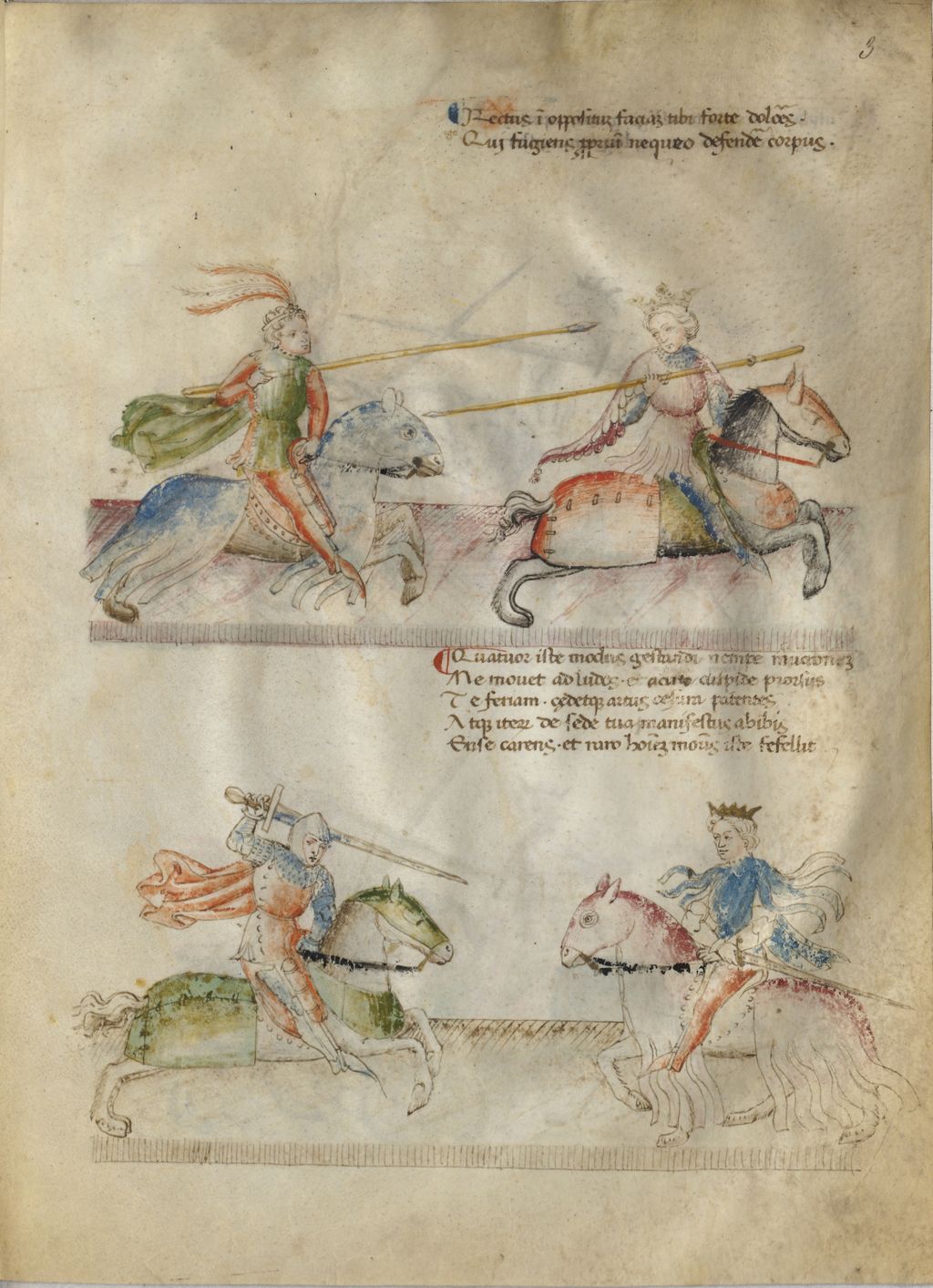- ¶ Rectus i[n] oppositu[m] facia[m] tibi forte dolo[r]es.
ego Qu[i] fugiens propriu[m] nequ[e]o defende[re] corpus.
- ¶ Quat[t]uor iste modus gestandi nempe mucrone[m]
Ne movet ad ludos. et [acute][1] cuspide prorsus
Te feriam. c[a]edetq[ue] artus cesura patentes
Atq[ue] ite[rum] de sede tua manifestus abibis
Ense carens. et raro ho[m]i[n]em mo[d]us iste fefellit
↑ This word was obliterated somehow (“et” and “cesura” both show uncorrected damage) but has been written over by a later hand in similarly-colored ink. Further, someone has tried to write something above it, perhaps a French equivalent—the superscript is unreadable, but the second word, above cuspide, appears to end in “te” and could be “pointe”. The superscript above “acute” may have been in the D1 or F hand, but not enough is clear. There may have been a superscript above mucronem that was erased, although the remaining strokes look like they may have suffered the same damage as the rest of the page. None of the superscripts are clear enough to certainly identify the hands.

